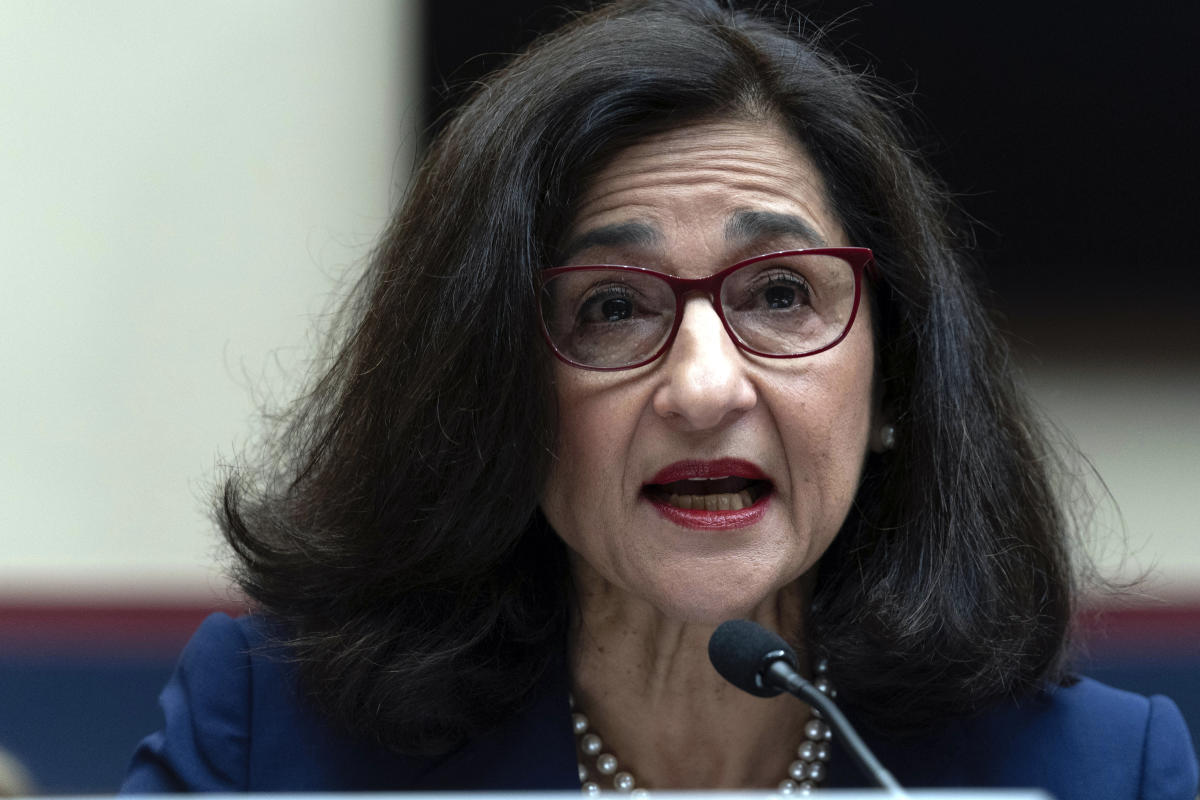Feb. 29—JEFFERSON — Jurors heard from Fredrick Johnson’s high school friend on Wednesday, the second day of Malikhi Coleman’s murder trial for Johnson’s shooting death.
Prosecutors claim Coleman, 21, followed Johnson from the Harbor Ridge Apartments in Ashtabula and shot him on Ohio Avenue in July 2022.
Rayburn Seawood was the second witness of the day called by Chief Assistant Prosecutor Dawn Cantalamessa.
He testified he met Johnson in 2014, while in high school.
He said the two met a group of people at the apartments the day of Johnson’s murder.
He said when he, Johnson and another person went to go to the store, Coleman yelled that his group had guns.
Seawood said he had his handgun on him the entire time.
“It was just a self-defense firearm I’ve had for a while,” he said.
Seawood’s group came back from the store to the apartments, and Johnson and Seawood decided to go back to Seawood’s apartment.
“We wanted to avoid drama with the other group,” he said.
Seawood said Coleman was shouting gang names at the group he was with.
He said he, Johnson and a number of other people took two cars and left to go to Seawood’s apartment nearby.
Coleman got into a Grand Marquis as Seawood and his group were getting into their cars, he said.
Seawood said the two cars stopped at the intersection of Lambros Lane and Ohio Avenue, and the car Coleman was riding in followed them.
“[The white Grand Marquis] came zooming down Lambros Lane, and shots started firing off,” he said.
Seawood said Johnson get out of his vehicle, so he started to get out of his car.
“As I was opening my door, shots started flying past my door, so I slammed it closed,” he said. One of the people in his car was hanging out of the window of his car, Seawood said.
Seawood said he could not find his gun at that point, and when the person who was hanging out of the window got back into the car, that person had Seawood’s gun.
He testified that Johnson had a gun as well, but said he did not see Johnson brandishing his gun that day, and Johnson did not have it in his hand when he got out of his vehicle.
Seawood said his car was shot multiple times, and one of the people in his car was grazed in the ribcage.
“I got out of the car, and everyone who was in Freddy’s car were like, running, I guess you would say, away from the incident,” he said.
Seawood said he tried to get someone to take Johnson to the hospital, but when no one would, he went home in case the white Grand Marquis came back.
He said someone was firing from the white car as it turned onto Ohio Avenue, then stopped once they were fully onto the road.
He said Coleman was the one who was firing from the white car.
“The incident itself … couldn’t have been longer than a minute,” Seawood said.
Seawood said he pleaded guilty to two counts of tampering with evidence in relation to the case, with two other charges being dropped, and will receive probation in exchange for his testimony.
He said Johnson’s car was pulled a little to the side after the shooting as Seawood attempted to get someone to take Johnson to the hospital.
He said they pulled their guns out once that day for a photo for social media, but that was it.
On cross-examination, Malcolm Stewart Douglas, Coleman’s attorney, asked how many guns were in the cars.
“Two in mine and one in Freddy’s,” Seawood said. He said he did not know how many guns were in Coleman’s car.
Douglas asked about Seawood’s plea deal.
“It sounds like an exceedingly good deal,” Douglas said.
Cantalamessa objected, and Harris sustained the objection. Douglas withdrew the question.
“You don’t know who fired first?” Douglas asked.
“No,” Seawood replied.
After a follow-up question from Douglas, he repeated he did not know who fired first.
Cantalamessa’s first witness of the day was Dr. Daniel Sullivan, a deputy medical examiner at the Cuyahoga County Medical Examiner’s Office. Sullivan performed the autopsy on Johnson.
His first step was reviewing the records provided to him, then to perform an external examination of the body.
“There’s one major injury, which is a gunshot wound to the head,” he said.
Cantalamessa showed the jury a photo of the wound, followed by a number of photos taken during the autopsy.
Sullivan said he found no other gunshot wounds on Johnson’s body, and he did not find an exit wound during his examination.
He said he recovered a bullet during his examination, and submitted it to a forensic examination agency.
Lieutenant Wesley Burns, a detective with the Ashtabula Police Department, took the stand and testified about assisting in collecting evidence at the scene of the crime.
Cantalamessa had Burns identify photos taken at the crime scene, and a diagram showing the layout of where the evidence was collected.
Photos showed a number of nine-millimeter shell casings near the car Johnson was driving, along with keys, a bag and a pair of shirts that were near Johnson’s body, Burns said. Further north, at the intersection of Ohio Avenue and Lambros Lane, he said photos showed a number of spent 7.62-caliber shell casings.
The shell casings recovered from the scene were submitted into evidence after Burns identified them.
Burns also processed the car Johnson was driving.
“I also obtained video from Harbor Ridge Apartments, and I analyzed the video and put together a timeline,” Burns said.
He reviewed a timeline he created using surveillance recordings, which showed Coleman taking a gun from the white Grand Marquis to a picnic table, then groups of people with Coleman and Johnson shouting at one another.
At around 8:30 p.m., two cars, a Suzuki and the car Johnson was driving, left the complex, Burns said.
Surveillance photos show the Grand Marquis Coleman was riding in following after them.
“The Grand Marquis is following behind the [other two vehicles],” Burns said. “The rifle can be seen in Malikhi Coleman’s hand, pointed out of the window, and then placed, what looks to be on his lap.”
Video shows the Grand Marquis following the two vehicles out of the complex, followed by people fleeing the area.
Burns said he also went to the Glenwood Apartments on West 19th Street.
“We were looking for subjects that were possibly involved in the shooting,” he said.
He said officers found a box of nine-millimeter ammunition and the clothes one of the people involved wore on the night of the shooting at one of the apartments.
Burns said he also assisted in the search of the white Grand Marquis, and he identified photos for the jury, and identified 7.62-caliber shell casings found in the vehicle.
On cross-examination, Douglas asked Burns about the night Johnson was killed.
Burns said he arrived on the scene at about 10:09 p.m.
Douglas and Burns reviewed the diagram of the crime scene, and Burns said nine-millimeter shell casings were found about five feet from the rear of the vehicle Johnson was driving.
Douglas asked Burns to identify which shell casings were damaged.
Four nine-millimeter casings were on the ground, and two were damaged, Burns said. He said he did not know what could have damaged the casings.
Three of the 7.62-caliber shell casings were damaged, he said.
Regarding the security video, Douglas asked if Burns magnified sections of the security camera video, and Burns said he did.
Burns said he saw two guns in the video.
Cantalamessa followed up regarding the shell casings.
Burns said casings can go a short enough distance to hit you after you fire or can travel quite a distance after being ejected from a gun.
Alex Miller, a forensic scientist with the Ohio Bureau of Criminal Investigation, testified regarding the examination of the bullet that killed Johnson, the shell casings found at the scene and a rifle found by police.
Cantalamessa and Miller reviewed Miller’s report on what was submitted in this case.
Nineteen fired shell casings were submitted to BCI for testing, Miller said, four nine-millimeter and 15 7.62×39 casings.
She also received a single bullet and a rifle for testing.
She said microscopic imperfections in a gun impart individual characteristics onto bullets and cartridges.
“All of the 7.62×39-millimeter cartridge cases … were identified as having been fired by the submitted firearm,” Miller said.
Miller said the bullet that killed Johnson was heavily damaged, and she was not able to determine its caliber.
Her analysis found there was a likelihood that the bullet came from the rifle that was submitted, but she could not say for certain because of the damage.
She said BCI was not sent a nine-millimeter gun, but she was able to determine they were all fired from the same gun.
On cross-examination, Douglas asked about the damage to the casings.
“Some of them may have been damaged, but the areas I was looking at under the microscope was not damaged,” Miller said.
He then asked about the round that killed Johnson, and reiterated the fact that Miller couldn’t determine the caliber of the bullet.
The two sides agreed to stipulate Coleman dropped off a firearm at a house in Ashtabula.
The trial began Tuesday with jury selection, opening statements from both sides, and the first four witnesses from the prosecution.
Those witnesses included Johnson’s mother, two Ashtabula police officers, and a witness to the shooting.
Signup bonus from




